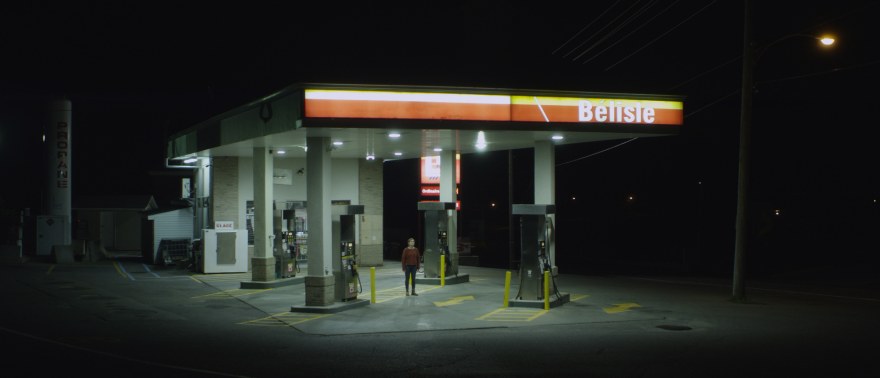Night cap with Cayenne
Interview with Simon Gionet, director of Cayenne
What did you want to explore in the relation between the man and the young women?
My intention was to explore the sense of apprehension that a woman can experience in her everyday life. The anxious feeling of being followed, the fear to be approached insistently and the possibility of a threat are ever-present. Whether it be in a private or public space, the intimacy of a woman is always at stake, questioned and fragile, threatened by intrusion. This apprehension creates solitude and mistrust. It can also generate internalized guilt, which consists of feeling responsible for having attracted the attention of the male gaze, or even guilty for not having responded or reacted the “right way”. These conflictual feelings interpellated me. With Cayenne, I wanted to understand and make visible how these feelings of apprehension influence the experience of a young woman and distinguish it from that of a man who is preserved from it. In the context of this film, this dynamic presents itself when a female gas station clerk crosses paths with a male driver whose car broke down in the middle of the night. To build this interaction, I relied on the testimony and experience of women around me, trying to transpose as accurately as possible the feelings and reactions they shared with me. My approach was guided by the commitment to stage a main female character in action who navigates the emotional context described to me. The film is a step towards validating this experience on screen, understanding it, and initiating a responsible conversation.
How did you work to build that tension in your film ?
The action is set at night. It takes place within the perimeter of a gas station which stands as a huis clos, where the female clerk and the driver are left alone in the space. The film’s premise creates an atmosphere of tension as well as an impression of déjà vu, as we fear the outcome of this unfortunately familiar narrative: that of a young woman who is assaulted at night by a man. Therefore the narrative tension of the film relies on both this context and our expectations as viewers while we follow the interaction between the two characters. The narrative also rests on the fact that the action is perceived through the point of view of the clerk ; the driver’s gaze creates an increasingly uncomfortable climate for both the protagonist and the audience. The presence of surveillance cameras is part of this overwatching feeling and suggests that something will happen and be recorded. As for the aesthetic choices of the film, the close framing of the action, the abrupt editing cuts and the amplification of certain diegetic sounds also raise the tension. The photography, directed by François Herquel, was also designed to take advantage of the anxiety-provoking nature of the gas station, such as its neon lighting and the surrounding darkness.
Can you explain why you chose that particular ending? What did you hope the audience would take from it?
The ending lends a cyclical aspect to the story. We do not know the identity of the individual in the vehicle. The reaction of Clara, the main character, allows us to draw our own conclusions. With this finale, I wanted to return to the feeling of apprehension that inhabits the clerk, still on her guard. I wanted the audience to feel that. After the events of the film, she barely has time to assimilate what she has just experienced. Despite how she feels, the job goes on : as we are led to believe that a new customer arrived, we can foresee that the clerk will probably put on a façade and make it look as if she was fine. Neither the main character nor the audience know how the next encounter will end. Again, there is the idea of being back on guard. It seemed to me that this emotional repression and this wariness resonated with a certain female experience.
Would you say that the short film format has given you any particular freedom?
A short film requires conciseness. This is a constraint that I find particularly difficult yet stimulating, especially when it comes to make the audience feel a precise emotional state in a brief amount of time. The short film medium was well-suited to my intentions, as the film aims to explore the tensions and feelings of a character within a quick situation, in a defined time and place.
What do you consider your cinematographic references?
First of all, I consider Lynne Ramsay, for her ability to capture the internal conflicts of her characters and the violence of everyday life; for her cinematographic universe that only slightly deviates from reality; for her attention to detail, to the smallest gestures of her characters. I also have great respect for the work of Michael Haneke, who toys with the viewers’ expectations and questions our relationship to images and the ways in which they shape our experience of others and reality. These are priorities that I share.
Cayenne is part of International Competition I3.








